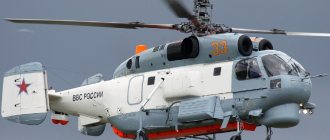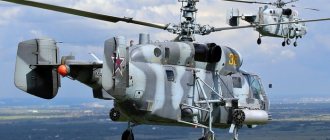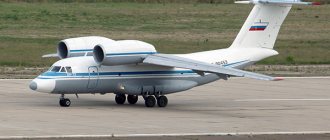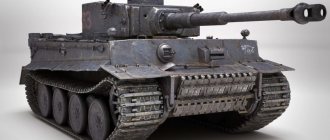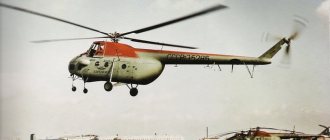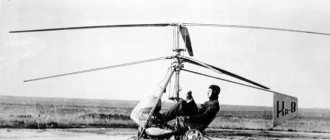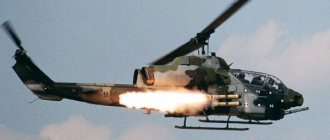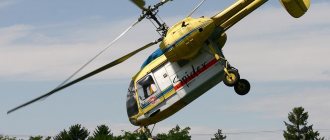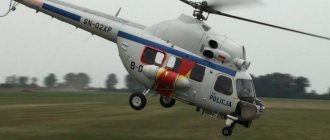Short review
Development of the Tiger helicopter began during the Cold War. It was originally intended as an anti-tank platform to fight against a Soviet ground invasion of Western Europe. During the work on the aircraft, the Soviet Union collapsed, but France and Germany chose to continue the project with the goal of creating a multi-purpose attack helicopter. It reached operational capability in 2008.
The Eurocopter Tiger was the first composite helicopter developed in Europe. Its early models featured advanced features such as a glass cockpit, low-observability technology and high maneuverability, enhancing its combat survivability. Since then, improved versions have been introduced, equipped with more powerful engines and compatible with a wider range of weapons. They were used in battles in Afghanistan, Libya and Mali.
The Tiger performs a wide range of combat missions, including combat reconnaissance and surveillance, anti-tank and close-in air support, escort and facility protection. The helicopter is capable of operating day and night, in any weather and in conditions of nuclear, biological or chemical warfare. The Tiger can also be used at sea, taking off and landing on the deck of ships, including frigates, in extreme weather conditions. The helicopter features a high level of maneuverability, much of which is due to the design of its 13-meter, 4-bladed main rotor. The Tiger can perform aerobatic maneuvers such as “loops” and maneuvers with negative G-forces. Its power comes from two MTR390 turboshaft engines controlled by FADEC.
Development history
The Eurocopter Tiger is a relatively new attack helicopter developed jointly by the governments of France and Germany. It belongs to the same class as the American Hughes AH-64 Apache, Russian Ka-50, Italian Agusta A129 and South African Denel AH-2.
The idea of creating a joint venture to produce a powerful attack helicopter arose in the mid-1980s. Then the French aviation company Aerospatiale and the German bureau MVB took up the work. Despite the program's financial problems and its closure after just 2 years, the project was resurrected in 1987. At the end of 1989, a contract for the construction of five prototypes was signed, and the first Tiger flew in April 1991. By 1992, the joint Aerospatiale and MBB were reorganized into the Eurocopter Group. Tiger production began in 2002, with deliveries starting the following year.
The EC665 Tiger was developed for France and Germany in three configurations: as a multi-role fire support (UHT) helicopter for the German army, a multi-role attack (HAD) and combat support (HAP) helicopter for the French army. The first flight of the Tiger HAP production model took place in March 2003. France ordered 80 vehicles (40 HAP and 40 HAD), and Germany ordered 80 combat support helicopters. The first Tiger UHT was delivered in April 2005. In total, it was planned to purchase 120 Tigers for France and 120 for Germany.
In September 2003, Spain selected a fire support helicopter version armed with Rafael Spike-ER anti-tank missiles and Mistral air-to-air systems. 24 vehicles were ordered with an improved MTR390E engine and a larger payload. The first 6 HAP version helicopters were delivered to Spain in 2007 and converted to HAD.
France initially placed an order for 70 HAP and 10 anti-tank HAC, but this was changed to 40 HAP and 40 HAD in December 2005. Spain and France signed a contract to develop the helicopter in December 2004. Tiger HAD first flew in December 2007.
Helicopter "Tiger" - growing pains
At the same time, significant problems accompanied the entry of this type of aircraft into the troops.
According to the results of a comprehensive inventory of the main projects of new weapons, regularly carried out by the Federal Office for Armaments, Information Technology and Utilization of the Bundeswehr (hereinafter BAAINBw), set out in the report of the Ministry of Defense to the German Parliament in March 2022, the overall time frame for the implementation of the Tiger program exceeds the planned in time was more than 80 months, and in cost more than 934 million euros (+22%).
The development and supply of combat helicopters under the Tiger project began in 1984 with an intergovernmental agreement signed between Germany and France. Other partners were Spain and Australia, as an exporting country.
Within the framework of the project, work is carried out both at the international level under the auspices of the Organization Conjointe de Cooperation en matiere d'Armement, OCCAR, and on a national scale under the supervision of BAAINBw. At the same time, the project received the designation “Tiger support helicopter” (Unterstützungshubschrauber Tiger, UHT). The main contractor for the project is (Airbus Helicopters, or EUROCOPTER).
Airbus Helicopters company emblem
Initially, in 1984, it was planned to purchase 212 vehicles for the German Armed Forces. After a change in the market situation and a reassessment of the nature of the threats in 1994, the German government decided to purchase a multi-role support helicopter instead of an anti-tank one. The agreement on the acquisition of the UH "Tiger" was signed in June 1999. Moreover, a feature of the German version of the design was the sight placed on the mast above the main rotor of the vehicle.
Delivery organization
The development and delivery of helicopters for the Bundeswehr took place in several stages and was accompanied by numerous changes and additions to the original project. The first six Tiger helicopters were delivered to Germany in 2005 in the so-called pre-production version. It could not be used in combat, but was intended for training pilots and technicians. The entire batch was placed at the disposal of the Franco-German training center in Le Luc.
Tiger helicopter training center building in Le Luc, France
The Bundeswehr received the next five helicopters of an advanced pre-production configuration (the so-called basic level, version 002) in 2008 and 2009. These cars were much more consistent with their serial status. The first production samples of the Tiger attack helicopter began to enter service with the troops in 2010, six years late and in small quantities.
Against the backdrop of the reform of the national armed forces launched on October 4, 2011 by former German Defense Minister Thomas de Maizières and the established restrictions on major weapons systems, the need for helicopter purchases was revised and reduced to 80 vehicles. Later, in March 2013, the Ministry of Defense and the contractor signed another agreement (the so-called “German course”) to reduce the total number of equipment supplied to 68 units. In addition, it was envisaged that the contractor would buy back 11 previously delivered Tigers and would not sell spare parts for the last 10 helicopters to the Bundeswehr.
According to the report mentioned above, as of February 2018, Germany had received 65 Tiger helicopters. The remaining vehicles were expected to be received by the troops by the end of 2022. Of the total number, 68 helicopters, 45 Tigers are intended for ground forces. Of these, 32 vehicles are sent to the 36 attack helicopter regiment "Kurhessen" (Kampfhubschrauberregiment 36 "Kurhessen"), Fritzlar.
Emblem of the 36th Attack Helicopter Regiment, Fritzlar
Design
The Tiger is capable of flying at low altitude, making it very vulnerable to enemy ground fire or natural obstacles. Therefore, the issues of aircraft survivability are given top priority. The helicopter fuselage is armored in such a way that it can withstand a direct hit from a 23 mm projectile. This is achieved through the use of Kevlar, titanium and aluminum construction with carbon fiber reinforced polymer. Carbon fiber makes up at least 80% of the composite, titanium 6%, and aluminum 11%. Frames and beams are made of Kevlar and carbon laminates. The panels are made from Nomex honeycomb material with an outer layer of carbon and Kevlar. Inside this highly effective shell is lightning protection, advanced radio electronics (including GPS, radars and computers) and a targeting system built into the crew's helmets.
The blades are made of fiber composite. Structures and surfaces that reflect radar radiation have been kept to a minimum.
Externally, the Eurocopter Tiger follows the design philosophy of modern helicopters. The crew of two is housed in a two-seat cabin with a stepped layout with forward, overhead and side visibility. Unlike other attack helicopters, the pilot is located at the front. The entrance to its cabin is located on the left, and the gunner's cockpit is on the right. The seats are slightly offset from the central axis to improve visibility from every position. The nose has a noticeable slope, and the narrow fuselage takes advantage of the flat sides with rounded edges. The chassis is fixed and consists of two front wheels and a tail wheel at the rear. The helicopter is equipped with a main vertical stabilizer with two additional vertical fins extending from its base. The engines are located near the center of gravity of the machine.
The navigation system consists of two Thales Avionique three-axis ring laser gyros, two magnetometers, two flight computers, a BAE Systems Canada CMA 2012 4-beam Doppler radar, a radio altimeter, a global positioning system and a set of low airspeed sensors.
The armament for the Tiger series is located under the wings. The helicopter can be equipped with air-to-air, air-to-ground and anti-tank missiles. The wings are located directly behind and below the cockpit and have an excellent polyhedral camber. The weapon that is mounted on the front depends on the customer's choice. For example, French models were equipped with a 30 mm GIAT 30 cannon, and German ones were equipped with a 30 mm Rheinmetall.
Main characteristics:
- dimensions: 14.08 x 13 x 3.83 m;
- main/steering rotor diameter: 13/2.7 m;
- maximum weight/without load: 6/3.06 t;
- speed: 315 km/h;
- lifting speed: 642 m/min;
- flight range: 800 km;
- maximum flight altitude: 13 km.
Helicopters
Eurocopter Tiger. Attack helicopter. (Germany-France)
Multi-role attack helicopter Eurocopter Tiger (HAP Tiger / HAC Tigre).
The Tiger helicopter was developed by the Eurocopter consortium, which includes the German company MBB and the French Aerospatiale. According to the agreement adopted in 1987 by representatives of the Federal Republic of Germany and France, the development of two versions of a combat helicopter was carried out - an anti-tank helicopter, common for both countries and called HAC in Germany, and HAC in France, and an escort and fire support helicopter only for France, called HAP. The first flight of a prototype helicopter took place on April 27, 1991. Flight tests of five prototypes are currently underway. It is planned to produce 427 helicopters of all variants for both countries.
Features of the new combat helicopter are: the ability to perform combat missions around the clock and in difficult weather conditions, high maneuverability, combat survivability and operational manufacturability, a qualitatively new level of automation of control of on-board systems and weapons, as well as the widespread use of composite materials.
Eurocopter Tiger. Attack helicopter. (Germany-France)
All helicopter variants are based on a single basic design (fuselage, engines, hydraulic, fuel and electrical systems, etc.), as well as on a modular design of special equipment. The basic design is based on a single-rotor helicopter with a tail rotor, two gas turbine engines and a three-post landing gear with a tail wheel.
The helicopter has an airplane-type fuselage made of approximately 80% composite materials, which not only reduces the weight of the helicopter structure, but also helps reduce the life cycle cost and labor intensity of operation. In the front part of the fuselage there are cockpits for the pilot and pilot-operator arranged in a tandem configuration. The pilot's cabin is located in front, and the pilot-operator's cabin is behind and slightly higher. The main controls are duplicated and located in both cockpits, so that, if necessary, the pilot operator can take control of the helicopter. The design of the fuselage as a whole and the landing gear are made taking into account the requirements for safe damage to structures and systems. To ensure the safety of the crew in the event of an emergency landing, the lower part of the fuselage has panels with a honeycomb filling that have the ability to absorb kinetic energy. This design ensures a safe landing for the crew with a vertical speed of up to 10.5 m/s. A significant portion of the energy in the event of an emergency landing is also absorbed by the pilot's seats and landing gear.
Eurocopter Tiger. Attack helicopter. (Germany-France)
The helicopter has a wing with a span of 4.5 m, the end parts of which are lowered down. The wing has four hardpoints for weapons or additional fuel tanks. The power plant consists of two MTR 390 turboshaft gas turbine engines with a maximum takeoff power of 958 kW. each. The power plant is controlled by an electronic digital system that ensures optimal engine operation in all modes. To reduce the helicopter's visibility in the infrared range, the engine nozzles are equipped with devices for mixing exhaust gases with air. In the event of failure of one of the engines, continuation of the flight is possible by putting the other engine into emergency mode. The total capacity of the fuel tanks is 1360 liters. The fuel tanks are equipped with a system to prevent the explosion of the gas-air mixture in the space above the fuel.
The helicopter is equipped with a four-bladed main rotor and a three-bladed tail rotor. The propeller blades are made of composite materials. All versions of the helicopter are equipped with reconnaissance and sighting equipment, navigation equipment and weapons control systems, ensuring their combat use day and night, in simple and adverse weather conditions. The sighting system includes: a television camera, an infrared night vision system, a laser rangefinder-target designator and helmet-mounted sights. Targeting and navigation information can be displayed on helmet-mounted indicators, on the windshield and color multi-function liquid crystal displays in the cockpits of crew members.
Eurocopter Tiger. Attack helicopter. (Germany-France)
The armament of anti-tank helicopters should consist of 8 Hot-2 ATGMs or 8 new Trigat ATGMs and 4 Mistral or Stinger air-to-air missiles. Escort and fire support helicopters are armed with a built-in 30mm air cannon on a turret, 68mm unguided missile launchers and 4 Mistral missiles.
Characteristics (HAP option):
- Crew: 2 (pilot and weapons operator);
- Length: 15.8 m;
- Fuselage length: 15.0 m (with cannon);
- Main rotor diameter: 13.0 m;
- Tail rotor diameter: 2.7 m;
- Maximum fuselage width: 4.53 m (with pylons);
- Height: 4.32 m (with tail rotor);
- Area swept by the main rotor: 132.7 m²;
- Chassis base: 7.65 m;
- Chassis track: 2.38 m;
- Empty weight: 4200 kg;
- Normal take-off weight: 5300 - 6100 kg (depending on the mission);
- Maximum take-off weight: 6100 kg;
- Fuel mass in internal tanks: 1080 kg (+ 555 kg in PTB);
- Fuel tank volume: 1360 l (+ 2 × 350 l PTB);
- Powerplant: 2 × MTU/Turbomeca/Rolls-Royce MTR390 turboshafts;
- Engine power: 2 × 1285 l. With. (2 × 958 kW (takeoff));
- Maximum permissible speed: 322 km/h;
- Maximum speed: 278 km/h;
- Cruising speed: 230 km/h;
- Practical range: 800 km;
- Ferry range: 1280 km (with PTB);
- Flight duration: 2 hours 50 minutes;
- with maximum fuel reserve: 3 hours 25 minutes;
- Static ceiling: 3500 m (out of ground influence);
- Rate of climb: 11.5 m/s;
- Vertical rate of climb: 6.4 m/s;
- Disc load: 45.2 kg/m² (at maximum take-off weight);
- Small arms and cannon: 1 × 30 mm Giat AM-30781 cannon with 450 p. (30 × 113 mm);
- Suspension points: 4;
- Guided missiles: air-to-ground missiles - 4 × HOT or Trigat or AGM-114 on internal nodes. air-to-air missiles - 2 × Mistral or Stinger on external nodes;
- Unguided missiles: blocks of 22 on the internal and 12 missiles on the external nodes;
- Additional weapons: 12.7 mm machine guns with 250 rounds or PTB on internal units.
Eurocopter Tiger. Attack helicopter. (Germany-France)
Crew
The helicopter is equipped with a glass cockpit with two seats and is controlled by a crew of two. The pilot is in the front and the gunner is seated in the back. Any crew member can control weapons or primary flight controls, changing roles if necessary. In addition to flying the helicopter, the Tiger pilot typically controls defense and communications systems, as well as some minor weapons functions. Some weapons (such as the Trigat anti-tank missile) have special control interfaces, and air-to-air missiles can be controlled using the controls of both crew members.
Cabin
Each cockpit is equipped with two multi-function color displays from Thales Avionique and VDO Luftfahrtgerate Werk, displaying the gunner's sight, FLIR and Dornier/VDO Eurogrid digital map generator video.
The French Tigre is equipped with TopOwl sights manufactured by Thales Avionique, which are mounted on the helmets of both crew members and as a display in the cockpit. Tiger helicopter teams in Germany are equipped with helmets with day and night vision systems. Australian versions of the helmets are equipped with a sighting display manufactured by ADI.
Each cabin has a control and display unit that controls the navigation and communication systems. It includes a data input device and a removable memory unit pre-programmed with mission data at the ground station.
Equipment features of the UHT version
The Tiger attack helicopter in its production version (designation Mk I) at the turn of 2005 was characterized by a significant set of innovations. In particular, the vehicle received a duplicate layout of critical systems, a warning system for exposure to enemy radars, laser and other targeting systems. Equipment for disorienting enemy guided missiles with infrared and radar homing heads was mounted on the helicopter fuselage.
Mast sight OSIRIS
The commander-gunner's electronic equipment includes an OSIRIS mast-mounted sight with a daytime black-and-white channel, a thermal imager and a laser rangefinder.
The cockpit equipment includes a side-view system (Pilot Sight Unit, PSU), a predictive IR flight control support system (Forward Looking Infrared-Flugführungsunterstützungssystem, FLIR).
Night vision devices are integrated into the helmets of both crew members. The equipment of the German Tiger version allows switching between night vision and FLIR, as well as between the residual light amplification system and thermal imaging, almost without delay during night flight conditions.
Tiger pilot in helmet
The helicopter's communications equipment includes a VHF frequency-modulated (FM) radio, a combined VHF/UHF transmitter, and a high-frequency (HF) radio. In addition, the Tiger is equipped with an operational support unit with a Battlefield Management System. The system allows you to exchange data via radio channel with a ground command post regarding changes in the situation and combat missions.
Armament
The wings (pylons) of the helicopter have four weapon hardpoints. Two Stinger missiles with a firing range of 5 km are attached to two external nodes. Two internal hardpoints allow you to install one of the following weapons:
- 12.7 mm GunPod HMP coaxial machine gun with a firing range of up to 1500 m (400 rounds of ammunition);
- launch container 70 mm NUR (16 missiles, range 6 km), or ATGM “Hot” launcher (4 missiles, range 4 km);
- PU ATGM PARS 3 (4 missiles, range – 6000m).
Mixed weapon suspension option
Power point
The characteristics of the helicopter are impressive: its maximum speed is 315 km/h, and its flight range is 800 km (and up to 1300 km due to the use of additional fuel tanks). The 4-blade propeller and 3-blade tail rotor are powered by two Rolls-Royce MTR390 engines. The sight can be mounted above the main rotor by reducing the maximum speed to 290 km/h. The tail propeller is located on the right side of the tail.
The Tiger HAP and UHT models are equipped with two MTR390 turbo engines producing 960 kW (1,285 hp). Their self-locking, impact-resistant fuel tanks are equipped with an explosion suppression system and check valves.
The Tiger HAD is equipped with two advanced MTR390-E engines with a power of 1094 kW (1467 hp).
Tiger UHT
Tiger UHT helicopters are equipped with a SAGEM Osiris sight with an infrared charge-coupled device camera (IRCCD) and a laser rangefinder. The nose has a FLIR infrared sensor with a viewing angle of 40° x 30°.
The Tiger can be equipped with 4 MBDA Mistral or Raytheon Stinger missiles. The air-to-air system controls are located on the flight control stick. Target acquisition is done manually using a joystick or automatically. The FIM-92 Stinger missile, also produced under license from EADS (formerly LFK), is equipped with a 1-kg warhead and has a range of up to 5 km. The Mistral warhead weighs 3 kg and has a flight range of 6 km.
The multi-role fire support helicopter "Tiger" is equipped with an ATGM to launch anti-tank Euromissile HOT 3 and Euromissile TRIGAT LR, controlled by a gunner. Only one type of weapon is activated at a time.
The TRIGAT LR missile has a range of 500 to 5000 m and can be used in direct attack or dive modes.
HOT 3 has a flight range of up to 4000 m.
In June 2006, Germany placed a contract for the supply of PARS 3 (TRIGAT LR) missiles. By 2014, 680 units were delivered to arm the German Tiger UHT helicopter.
The Australian Tiger ARH is equipped with an M299 launcher for the Hellfire II, as well as 70 mm rockets.
Operational characteristics
The German Army Command considers the Tiger as a universal protected combat system suitable for performing a wide range of tasks in the interests of the Army and Navy within the framework of operations of a national and international nature.
It is believed that, as an independent maneuverable combat element, the Tiger helicopter is capable of operating in areas difficult to reach for ground-based weapons systems (for example, due to terrain or infrastructure conditions), quickly reaching the combat zone, successfully closing gaps in combat formations, and significantly strengthen the fire capabilities of interacting units.
Tiger attack helicopter UHT
The Tiger attack helicopter is designed to engage significant ground and air targets, control posts, armored and other protected objects, as well as fire weapons deep in enemy territory. The helicopter's ability for flexible and highly maneuverable operations in wide areas and high firepower determine its high combat and operational significance.
Tiger HAD
The French Tiger HAD helicopters are armed with eight laser-guided Hellfire II air-to-ground missiles with a range of more than 8 km.
The Spanish HAD is armed with an air-to-ground Rafael Spike-ER.
The modification is also armed with a 30 mm Nexter cannon, 70 mm missiles and 4 Mistrals. A Sagem Strix optical aiming system is installed above the cockpit.
In December 2015, the French Defense Acquisition Agency (DGA) placed an order for 7 combat Tiger HADs. In December 2017, French aviation received its first modified helicopter manufactured by Airbus.
Development of combat capabilities
At the same time, according to experts, the tactical and technical characteristics of the Tiger Mk I model, as it entered service with the troops, no longer met the changing requirements of combat and the capabilities of the protection systems of modern models of armored vehicles. In particular, 12 helicopters sent to Afghanistan in the interests of carrying out the ISAF mission were modified to a specially developed version of the “Asgard” (Afghanistan Stabilization German Army Rapid Deployment“-Full, ASGARD-F).
The modification included improvements to crew ballistic protection and software reliability, as well as the installation of a multi-band radio with SatCom/TacSat functionality and sand filters for engines. In addition, the ability to record the progress of a combat mission (as a legal requirement) has been implemented.
In the period until June 30, 2014, Asgard version helicopters flew 260 combat missions (1,860 flight hours) and received generally positive ratings.
Tiger helicopter flight over Afghanistan
Experience in operating the Asgard variant in Afghanistan and proposals from the troops served as the basis for identifying measures aimed at increasing the combat capabilities of the helicopter as part of the package of requirements for the Tiger attack helicopter in the Mk II version.
Further improvement of the helicopter performance characteristics should include:
- increasing the firing accuracy of 70 mm missiles by equipping them with a laser homing head;
- possibility of using 70 mm “Top” missile launchers (Tiger Helicopter Outer Rockets, THOR) on an external sling;
- anti-laser protection against mixed and infrared lasers for the crew;
- increasing the combat range by installing an additional fuel tank (Combat Fuel Tank);
- installation of a Commanders Laserpointer to simplify interaction with ground forces;
- further improvement of ballistic protection for the crew.
At the same time, it is planned to bring 40 ground vehicles to the ability to use the Asgard equipment set, and increase the number of such sets to 24 units. This re-equipment was planned to begin in 2022 and be completed by 2024.
Tiger cockpit equipment
Tiger ARH
The Tiger ARH reconnaissance helicopter, produced for Australia, is equipped with an M299 launcher for the Hellfire II, and is also armed with 70 mm Hydra missiles, a 30 mm Nexter cannon and 4 Stinger air-to-air systems.
In December 2001, the Tiger ARH was ordered by the Australian Army in a quantity of 22 units. It is a modified version of the HAP Tiger with upgraded MTR390 engines, a laser designator included in the Strix Hellfire II air-to-ground missile sight, and M299 smart launchers.
The Tiger ARH first flew in February 2004 and began deliveries in December 2004. Commissioned in 2008
Eurocopter Australian Aerospace has established a local production facility in Australia to assemble helicopters and manufacture spare parts. ADI Ltd is a major subcontractor responsible for the operation of the mission and communications systems.
Tiger HAP
As a combat support helicopter, the HAP Tiger is equipped with a cannon for close combat, 68 mm missiles for medium and long range and Mistrals for combating air threats. The model is armed with a 30 mm turret cannon and either four Mistrals and 44 missiles or 68 missiles. Only one type of weapon can be activated at a time.
The French Army Tiger HAP helicopter is equipped with a Nexter 30mm AM-30781 automatic cannon. The rate of fire is 750 rounds per minute. Tiger NAR is also armed with four Mistrals and two overhead containers, each of which can accommodate 22 68-mm SNEB missiles.
The Tiger HAP is equipped with a SAGEM Strix over-the-cockpit optical aiming system mounted on a gyro-stabilized platform, infrared and charge-coupled device television cameras, a laser rangefinder and a direct optical sight.
The helicopter can be deployed on French Navy ships of the Mistral and Foudre classes and on the aircraft carrier Charles de Gaulle.
How much does a helicopter cost?
"Tiger" is produced in 4 main versions intended for different countries. Today helicopters are used by Spain, France, Germany, Australia and Saudi Arabia. Australian Tigers are assembled in Australia, and Saudi Arabia signed a contract in 2006 for the supply of 142 units of several versions.
The cost of one Tiger is from 27 to 35 million euros, and the entire program is 14.5 billion euros. It is difficult to say exactly how much a helicopter costs, since its price depends on the specific implementation. For example, Tiger HAD is estimated at US$44–48 million.
Overall, the Eurocopter Tiger is expected to remain in service in Europe and beyond for a long time. In May 2022, the governments of France and Germany approved the third modernization of the helicopter, thanks to which the machine will remain competitive until 2040.
French Air Force (2018)
Lieutenant Colonel I. Kamov
The French Air Force is a branch of the republic's armed forces, designed to conduct combat operations in aerospace independently or in cooperation with ground forces and naval forces.
| Location of the main air bases of the French Air Force |
| Organizational structure of the French Air Force |
In accordance with doctrinal documents, the Air Force is entrusted with the following main tasks: - gaining air superiority and striking the entire depth of the enemy’s operational formation with the aim of destroying or putting out of action its important administrative, industrial and military facilities; — implementation of the nuclear deterrence policy with the involvement of the air component of the country’s strategic nuclear forces (SNF); — control of air and outer space, air defense of the national territory and troop groups beyond its borders; — ensuring the transport of troops (forces), equipment, materiel and ensuring airborne landings; — providing air support to national groups of ground and naval forces; — conducting aerial reconnaissance; — participation in search and rescue operations, as well as solving other problems in the interests of government services and departments.
The direct leadership of the air force is exercised by the chief of staff of the air force (since June 2015 - army general of aviation A. Lanata), who is located on the territory of the military-administrative complex of the French Ministry of Defense "Balar" (Paris).
The strength of the French Air Force is 41,160 military personnel (including 6,299 officers, 24,416 non-commissioned officers, 10,381 soldiers and sergeants, and 64 volunteers) and 5,079 civilian employees (a total of 46,239 people). At the same time, the share of female military personnel is 21% (about 9 thousand).
Organizationally, this type of armed forces includes two operational commands - strategic aviation, air operations and air defense, as well as one administrative (in French terminology - “organizational”) aviation command. In addition, the central directorate for air force personnel training is subordinate to the chief of staff of the Air Force.
Strategic Air Command
(SAK, CFAS - Comman-dement des forces aeriennes strategiques) is responsible for the use of the air component of the country's strategic nuclear forces (with the exception of the nuclear forces of the naval aviation). The SAC headquarters is located at the Villacoublay airbase (Velizy, a suburb of Paris). Subordinate to the command are two fighter-bomber aviation squadrons - 1/4 IBAE "Gascony" (former 1/91 IBAE), stationed at the Saint-Dizier airbase, and 2/4 IBAE "Lafayette" (AvB Istres). In addition, the 2/91st air refueling squadron "Brittany" became part of the SAC.
| Table 1 Main air bases of the French Air Force | ||
| Air base number | Name | Base point (region) |
| 102 | Lonvic-Dijon | Dijon |
| 105 | Evreux-Fauville | Evreux |
| 106 | Bordeaux-Merignac | Bordeaux |
| 107 | Villacoublay | Valim |
| 110 | Cray | Cray |
| 113 | Saint-Dizier-Robinson | Saint-Dizier |
| 115 | Orange Card | Orange |
| 116 | Luxeuil - Saint-Sauveur | Luxey |
| 118 | Mont-de-Marsan | Mont-de-Marsan |
| 120 | Caso Caso | (40 km south gulf of Bordeaux) |
| 123 | Orleans - Bricy | Orleans |
| 125 | Istres - Le Toubet | Istres |
| 126 | Solenzara | O. Corsica |
| 133 | Nancy-Aucher | Nancy |
| 204 | Bordeaux - Beausejour | Bordeaux |
| 273 | Romorantin - Prunier | Romorantin |
| 278 | Amberrier-en-Buget | 75 km southeast. Tour |
| 279 | Chateaudun | Chateaudun |
| 701 | Salon de Provence | Salon de Provence |
| 702 | Avor | Burj |
| 705 | Tour | Tour |
| 709 | Cognac - Chateaubernard | Cognac |
| 721 | Rochefort | Rochefort |
| 722 | St. Tenac | 85 km north-east Bordeaux |
| 749 | Grenoble - Montbonneau | Grenoble |
| 901 | Drachenbronn | Drachenbronn |
| 942 | Lyon - Mont Verdun | Lyon |
The command is armed with two types of aircraft that carry nuclear weapons: the Rafale multi-role fighters and the Mi-Razh-2000N fighter-bombers. Each carries one ASMP-A air-launched cruise missile (ALCM) with a nuclear warhead. To solve the problems of refueling aircraft in the air, SAC has at its disposal strategic refueling aircraft C-135FR and KC-135R.
Air Operations and Air Defense Command
(CVO and Air Defense, CDAOA -Commandement de la defense aerienne et des operations aeriennes) performs the tasks of organizing the country's air defense, planning and directing air operations carried out both on national territory and abroad. The air defense and air defense headquarters is located in Paris. The command is responsible for organizing and controlling the air traffic of all military aircraft. These tasks are assigned to the national air operations control center (AVB Mont-Verdun).
As part of the protection of French airspace, the entire European part of the country is divided into two air defense zones (Region aerienne) - northern and southern (RANord and RA Sud), the operational centers of which are located in Saint-Mars-la-Pille and Salon-de-Provence . A special feature of the command is that it does not permanently employ aviation equipment (AT).
Air Command
(CA, CFA - Commandement des forces aeriennes) exercises administrative control over all forces and means of the Air Force. The headquarters is located on AvB Merignac. The command includes squadrons and squadrons of combat and auxiliary aircraft, airspace control forces and means, etc. In addition, the spacecraft carries out the tasks of organizing comprehensive support for aviation units and Air Force infrastructure facilities. These functions are assigned to the units and services that became part of the spacecraft when it merged in 2014 with the pre-existing air force support command (CSFA - Sot-mandement du soutien des forces aeriennes).
The command organizationally includes six aviation brigades - combat aviation (BAAC - Brigade aerienne de l'aviation de chasse), auxiliary aviation (BAAR - Brigade aerienne d'appui et de projection), airspace control, communications and electronic warfare (BACE - Brigade aerienne du controle de l'espace), security and safety forces (BAFSI - Brigade aerienne des forces de securite et d'intervention), aviation weapons systems (BASAA - Brigade aerienne des systems d'armes aeriens) and aviation support (BAAMA - Brigade aerienne d'appui a la ma-noeuvre aerienne).
Geographically, Air Force units and units are consolidated into air bases. The head of the air base is responsible for organizing operational and combat training, comprehensive support, as well as for the combat readiness of the forces and assets at his disposal. In total, there are 27 air bases on mainland France, including 18 with a runway.
Each base has a double designation - a three-digit digital index and a code name linked to its location. At the same time, the AvB number indicates its type and purpose: 101-199 - operational bases (places of deployment of flight air units); 200-299 — support bases; 300-399 and 701-799 (with the exception of 702 AvB) - airfields of air force educational institutions; 601-699 - warehouse complexes; 800-899 - locations of administrative services of the Air Force, communications units and medical institutions (834-840); 900-999 - control and warning centers, air operations control centers, etc.
Currently, the 102nd and 901st air bases are in the process of being disbanded, and all flying units from the 110th have been withdrawn and redeployed to other airfields.
| French Air Force magazine archive - Air Actualités on FactMil.com |
In addition, four air bases are deployed in the overseas departments of France - 181st (Reunion Island), 186th (New Caledonia), 190th (French Polynesia) and 367th (French Guiana). Another six air bases are located in the overseas departments of the country and on the territory of the following states: Niger - Niamey (101st), UAE - El Dhafra (104th), Chad - Fort Lamy (172nd), Djibouti - Djibouti ( 188th) and Gabon - Libreville, Jordan - transferring operational air base (on the territory of Prince Hassan Air Force Base of the Jordanian Air Force).
The republic's Air Force is armed with: 234 combat aircraft (including 232 tactical fighters), 257 auxiliary aircraft, 76 helicopters (including 50 combat), ten unmanned aerial vehicles, eight SAMP/T anti-aircraft missile systems, "Crotal-NG" - 12. The French Air Force includes: 13 squadrons of combat aircraft (12 tactical fighters and one reconnaissance), a reconnaissance squadron of UAVs, 35 squadrons of auxiliary aircraft (including three training ones on Rafale fighters " and "Mirage") and four helicopter squadrons.
In the interests of training pilots in the air force of the republic there are: the 314th flight school of fighter aviation "Christian Martell" (AvB Tour), the 340th center for training transport aviation crews "General Lionel de Marmieu" (AvB Orleans), a flight school transport aviation "Captain Jean Dartigues" (AvB Avor), a basic flight training school (AvB Cognac), an initial flight training center (AvB Salon-de-Provence) and the 341st helicopter crew training center "Colonel Alexis Santini" (AvB Orange) . The Air Force also organizationally includes the Patrouil de France aerobatic team and the aerobatic team (AvB Salon de Provence).
Air Force units in the overseas departments are located at the air bases of Rochambeau (Cayenne, French Guiana), Reunion (Reunion Island), Noumea Tontouta (New Caledonia) and Tahiti (French Polynesia). On the territory of foreign countries, the French air force is stationed at the airbase El Dhafra (UAE) and Djibouti (Djibouti), as well as at the airfields of Abidjan (Côte d'Ivoire) and Libreville (Gabon).
As part of the external operations carried out by the armed forces of the republic, its air force is based in Burkina Faso, Mali, Niger and Chad (Operation Barkhane), as well as in the UAE and Jordan (Shamal).
The technical maintenance of aviation equipment and logistics in the interests of the national air force are carried out by the AT industrial support service and the joint aviation logistics service.
One of the most important areas of construction of the French Air Force is the replacement of outdated AT with modern models. Thus, the supply of Rafale multi-role fighters to the country's Air Force continues to replace the outdated Mirage-2000 family. In addition, it is planned to eventually withdraw the C-135FR and KS-135 tanker aircraft from the Air Force with the adoption of A.330MRTT aircraft instead (it is planned to conclude a contract for the purchase of eight units).
It is planned to complete equipping the Air Force with the SKKOA automated control system, modernize the Mi-Rage-2000D and Mirage-2000-5F fighters, C-130 military transport aircraft, E-3F AWACS and aviation control aircraft, as well as helicopters EC-725, AS-532 and SA-330B. Deliveries of new military transport aircraft A.400M will continue (15 units in total). At the same time, it is planned to purchase three additional MQ-9 Reaper UAVs, the transfer of which to the Air Force is expected in 2019.
| Table 2 Airplane and helicopter fleet of the French Air Force | ||
| Aircraft type | Qty | |
| Combat aviation | ||
| Tactical fighters | "Rafal" | 98 |
| "Mirage-2000N" | 22 | |
| "Mirage-2000D" | 68 | |
| "Mirage-2000-5/S" | 38 | |
| "Mirage-2000B" | 6 | |
| Reconnaissance aircraft | Reconnaissance and electronic warfare S-160G "Gabriel" | 2 |
| Total | 234 | |
| Unmanned aerial vehicles | ||
| Reconnaissance UAVs | "Harfang" | 4 |
| Multi-purpose UAVs | MQ-9 "Reaper" | 6 |
| Total | 10 | |
| Auxiliary aviation | ||
| Aircraft AWACS and control | E-3F | 4 |
| Transport aircraft | A-310 | 3 |
| A-330 | 1 | |
| A-340 | 2 | |
| A-400M "Atlas" | 6 | |
| S-160 "Transall" | 21 | |
| S-130 "Hercules" | 14 | |
| CN-235 | 27 | |
| "Falcon-7X" | 2 | |
| "Falcon-900" | 2 | |
| "Falcon-2000" | 2 | |
| TVM-700 | 15 | |
| DHC-6 | 5 | |
| Transport and refueling aircraft | C-135FR, KS-135 | 14 |
| Training aircraft | TV-30 "Epsilon" | 32 |
| "Alpha Jet" | 84 | |
| EMB-121 "Xingu" | 23 | |
| Total | 257 | |
| Helicopters | ||
| Combat support helicopters | AS-555 "Fennec" | 40 |
| ES-725 "Caracal" | 10 | |
| Transport helicopters | SA-330 "Puma", AS-332 "Super Puma" | 26 |
| Total | 76 | |
| Table 3 Composition of the French Air Force | ||
| Squadron/Squadron | Airbase | Types of aircraft |
| 2nd Fighter Squadron: 1/2 Air Defense Air Force "Sigony" | Luxey | "Mirage-2000-5F" |
| 3rd Fighter Squadron: 1/3 Airborne Navarre 2/3 Airborne Champagne 3/3 Airborne Ardennes 4/3 Airborne Argonne | Nancy | "Mirage-2000D" |
| 4th Fighter Squadron: 1/4 IBAE "Gascony" 2/4 IBAE "Lafayette"* 3/4UCHBAE "Akiten" | Saint-Dizier | "Rafal", "Mirage-2000N" |
| 8th Fighter Squadron: 1/8 Squadron "Sentong" 2/8 Squadron "Nis" 3/8 Squadron "Cote d'Or" | Caso | "Alpha Jet-E" |
| 30th fighter squadron: 1/30 isp. ae "Coted'Argent" 2/30 ibae "Normandie-Niemen" 3/30 ibae "Laurent" | Mont-de-Marsan | "Rafal", "Mirage-20000" |
| 31st Strategic Refueling Aviation Squadron: 2/91 "Brittany" | Istres | KS-135 |
| 36th squadron of AWACS and control of 36 airborne AWACS and "Berry" | Avor | E-3F |
| 61st Transport Aviation Squadron: 1/61 Tae Touraine 2/61 Tae Franche-Comte 3/61 Tae Poitou | Orleans | A.400M, S-130 “Hercules”, S-160 “Transall” |
| 64th transport aviation squadron: 1/64 air transport aircraft "Béarn" 2/64 air transport aircraft "Anjou" 1/54 air transport aircraft "Dunkirk" | Evreux | S-160 "Transall", S-160G "Gabriel" |
| Air defense squadron - 1 air defense squadron | Avor | |
| Control and communications squadron of Evreux 2/5 training camp "Ile-de-France" | Orange | "Mirage-2000B", "Mirage-2000S" |
| 3/60 tae "Esterel" | Villacoublay** | A-310, A-340 |
| 1/62 tae "Vercors" | Evreux | CN-235 |
| 3/62 tae "Ventu" | Evreux | CN-235 |
| 60 tae "Gael" | Villacoublay | "Falcon-900", "Falcon-7X" |
| 43 uchtae "Medok" | Merignac | TVM-700, AS-555 |
| 56 mixed agr "Vaucluse" | Evreux | DHC-6 |
| Non-metropolitan combat aviation squadrons | ||
| 1/7 ibae "Provence" | El Dhafra | "Rafal" |
| 3/11 Air Defense Air Force "Kore" | Djibouti | "Mirage-2000-5F", "Mirage-2000D" |
| Unmanned aircraft | ||
| 1/33 ae UAV "Belfort" | Cognac | Harfang, MQ-9 Reaper |
| Helicopter squadrons in the metropolis | ||
| 1/44 ve "Solenzara" | Solenzara | AS-332 "Super Puma" |
| 1/67 ve "Pyrenees" | Caso | SA-330 "Puma", EC-725 "Caracal" |
| 3/67 ve "Parisi" | Villacoublay | AS-555 "Fennec" |
| 5/67 ve "Alliy" | Orange | AS-555 "Fennec" |
| * 2/4 IBAE will be redeployed from Istres Air Base to Saint-Dizier Air Base upon completion of its re-equipment with Rafale multi-role fighters by 2022 ** The squadron's aircraft are based at Charles de Gaulle airport | ||
Foreign military review. 2022, No. 2 P. 52-59
